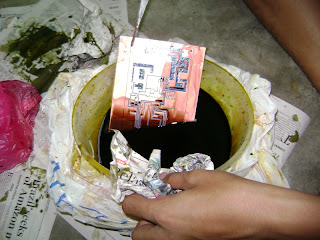Soldering is defined as "the joining of metals by a fusion of alloys which have relatively low melting points". In other words, using a metal that has a low melting point to adhere the surfaces to be soldered together. Consider that soldering is more like gluing with molten metal, unlike welding where the base metals are actually melted and combined. Soldering is also a must have skill for all sorts of electrical and electronics work. It is also a skill that must be taught correctly and developed with practice.
Soldering components onto a PCB involves preparing the surface, placing the components, and then soldering the joint.
Step 1: Surface Preparation:
A clean surface is very important if you want a strong, low resistance solder joint. All surfaces to be soldered should be cleaned well.
Step 2: Component Placement:
After the component and board have been cleaned,its ready to place the components onto the board.
Step 3: Apply Heat:
Apply a very small amount of solder to the tip of the iron. This helps conduct the heat to the component and board, but it is not the solder that will make up the joint.
Step 4: Apply Solder To The Joint :
Once the component lead and solder pad has heated up, you are ready to apply solder. Touch the tip of the strand of solder to the component lead and solder pad.
Step 5: Inspect The Joint and Cleanup:
Once the surface of the pad is completely coated,the joint is made and should inspect it.









































